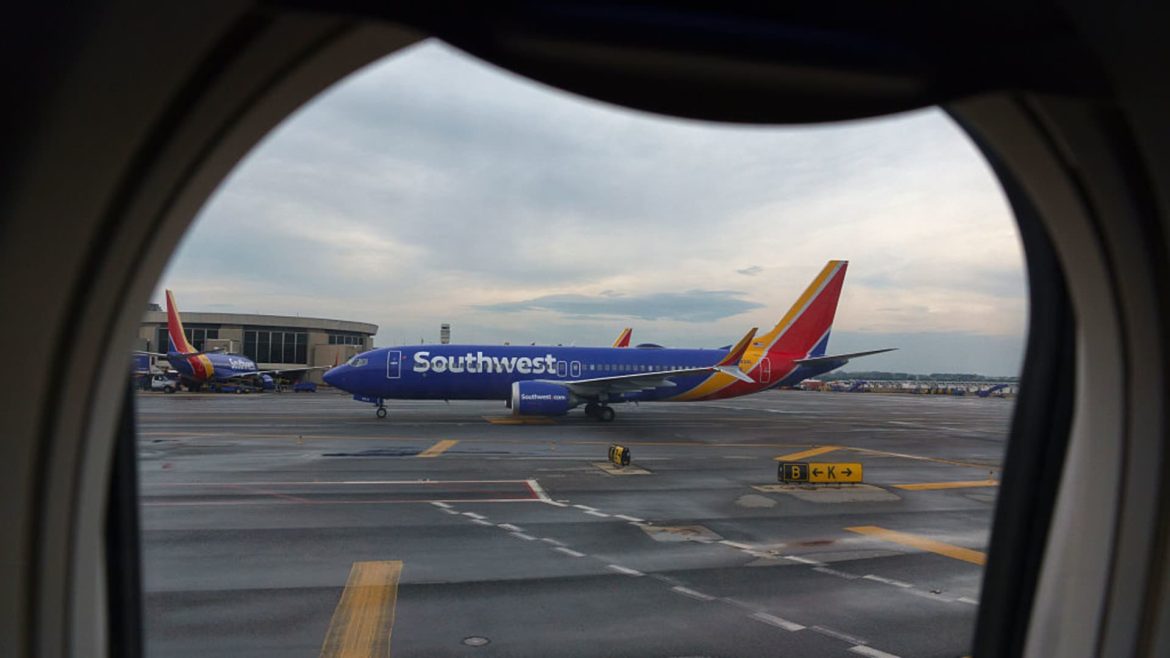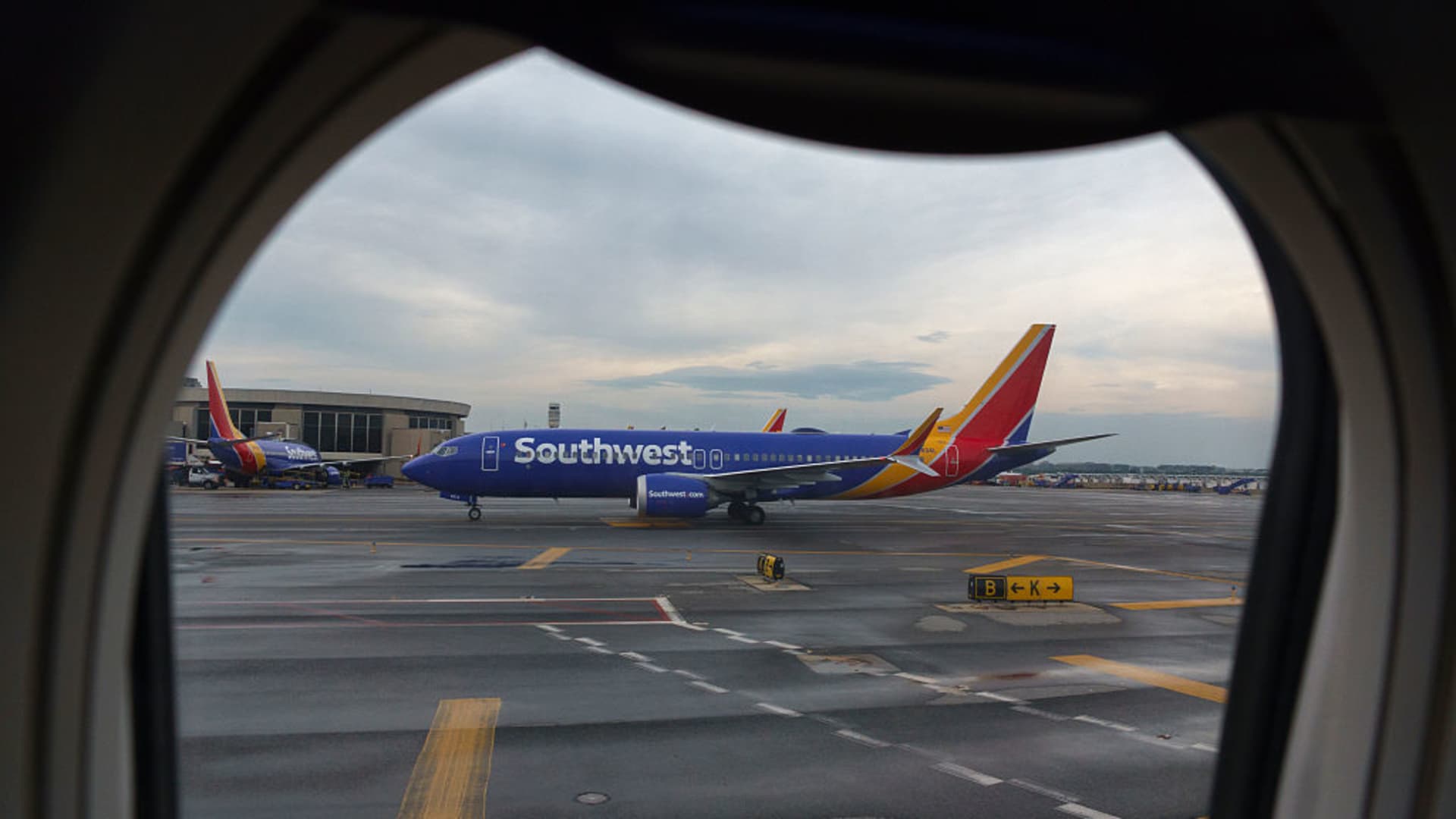Navigating Turbulence: A Deep Dive into Southwest Airlines’ Performance and Future Strategies
A Mixed Flight Path
Southwest Airlines, a pioneer in low-cost air travel, is currently experiencing a period of uncertainty. The airline’s recent financial performance has been a rollercoaster, with a 30% drop in quarterly profits in some instances, while in others, it has managed to exceed earnings expectations. This dichotomy underscores the complex dynamics at play in the aviation industry and the unique challenges Southwest faces as it strives to maintain its competitive edge.
The Shifting Sands of Demand
The most pressing issue for Southwest is the softening demand for domestic travel, particularly among leisure travelers who are price-sensitive. This trend has led to a decrease in load factors and softer fares, directly impacting the airline’s revenue. Several factors contribute to this shift:
– Post-Pandemic Normalization: The initial surge in travel demand post-pandemic has tapered off as consumers adjust to the new normal.
– Economic Uncertainty: Persistent inflation and economic instability have made consumers more cautious with their spending, particularly on discretionary items like travel.
– Competitive Pressure: Other budget airlines are also targeting the same customer base, leading to increased competition and pressure on fares.
Southwest’s heavy reliance on domestic leisure travel makes it particularly vulnerable to these trends. Unlike larger airlines with diversified revenue streams and international routes, Southwest’s business model is more exposed to fluctuations in domestic travel demand.
Cost Pressures: A Growing Burden
In addition to demand-related challenges, Southwest is grappling with rising costs, which are eroding its profitability. The airline’s third-quarter profit fell by nearly two-thirds, to $67 million, due to higher labor and operating expenses. Even as fuel costs decreased, the airline’s profitability was still negatively impacted.
– Labor Costs: As the airline industry recovers from the pandemic, labor costs have been rising due to increased demand for skilled personnel and competitive wage pressures.
– Operating Expenses: Maintaining and operating a fleet of aircraft is a significant expense, and any increase in these costs directly impacts the bottom line.
– Fuel Costs: Although fuel costs have fallen, they remain a significant variable cost for airlines, and any fluctuations can have a substantial impact on profitability.
The confluence of these cost pressures and weaker demand creates a challenging environment for Southwest, requiring careful management of both revenue and expenses.
Strategic Adjustments: Course Correction in Progress
In response to these challenges, Southwest is implementing a series of strategic adjustments aimed at restoring profitability and positioning the airline for future success.
Slowing Growth
Recognizing the need to better align capacity with demand, Southwest is slowing its growth rate. This move aims to absorb current capacity, mature development markets, and optimize schedules to current travel patterns. This decision suggests a shift from aggressive expansion to a more measured approach focused on efficiency and profitability.
Capacity Cuts
The airline plans to cut flights in the second half of 2025. As demand weakened throughout the quarter, it drove softness in bookings, particularly in domestic leisure travel. By reducing capacity, Southwest aims to better match supply with demand, thereby improving load factors and fares.
Revenue Management and Marketing Evolution
Southwest is focusing on revenue management actions, network optimization, and marketing evolution to drive its quarterly revenue performance. This includes implementing dynamic pricing strategies, optimizing marketing campaigns, and leveraging data analytics to better understand customer preferences and behaviors.
Network Optimization
Optimizing the airline’s route network is another key strategy. This involves analyzing the performance of different routes, identifying underperforming ones, and reallocating resources to more profitable markets. The company’s quarterly revenue performance was driven by strong demand, revenue management advances, marketing evolution, and network optimization.
Focus on Ancillary Revenue
The company has focused on additional ancillary and loyalty program revenue during the summer travel season. By offering more ancillary services and enhancing its loyalty program, Southwest aims to generate additional revenue streams and improve customer engagement.
2025 and Beyond: Charting a New Flight Plan
Looking ahead, Southwest faces both opportunities and challenges. The airline’s strong brand reputation, loyal customer base, and efficient operating model remain significant assets. However, the evolving dynamics of the aviation industry, coupled with broader economic uncertainties, require Southwest to adapt and innovate.
Guidance Withdrawal
Southwest has pulled its 2025 financial guidance, citing economic uncertainty. This decision reflects the difficulty in predicting future performance in the face of volatile market conditions. By withdrawing its guidance, Southwest acknowledges the need for flexibility and adaptability in its strategic planning.
Activist Investor Pressure
Southwest Airlines will lay out a strategy to turn around its business and restore profit margins to pre-pandemic levels as the U.S. carrier faces pressure from an activist investor to shake up its management. This pressure highlights the need for Southwest to demonstrate a clear path to profitability and shareholder value creation.
Trade War Uncertainty
Southwest Airlines became the latest U.S. carrier to withdraw its financial forecast as President Donald Trump’s trade war has created the biggest uncertainty for the industry since the COVID-19 pandemic. The ongoing trade war and its potential impact on the global economy add another layer of complexity to Southwest’s strategic planning.
Conclusion: A Test of Resilience
Southwest Airlines is at a pivotal moment, a test of its resilience and adaptability. The challenges it faces – weakening demand, rising costs, and external pressures – are significant. However, the airline’s proactive response, including strategic adjustments to growth, capacity, and network optimization, demonstrates its commitment to navigating these turbulent times. The path forward will require careful execution, a continued focus on efficiency, and a deep understanding of the evolving needs and preferences of its customers. Whether Southwest can successfully chart a new flight plan and return to sustained profitability remains to be seen, but the airline’s history of innovation and its unwavering commitment to its core values suggest that it is well-equipped to weather the storm and emerge stronger.





